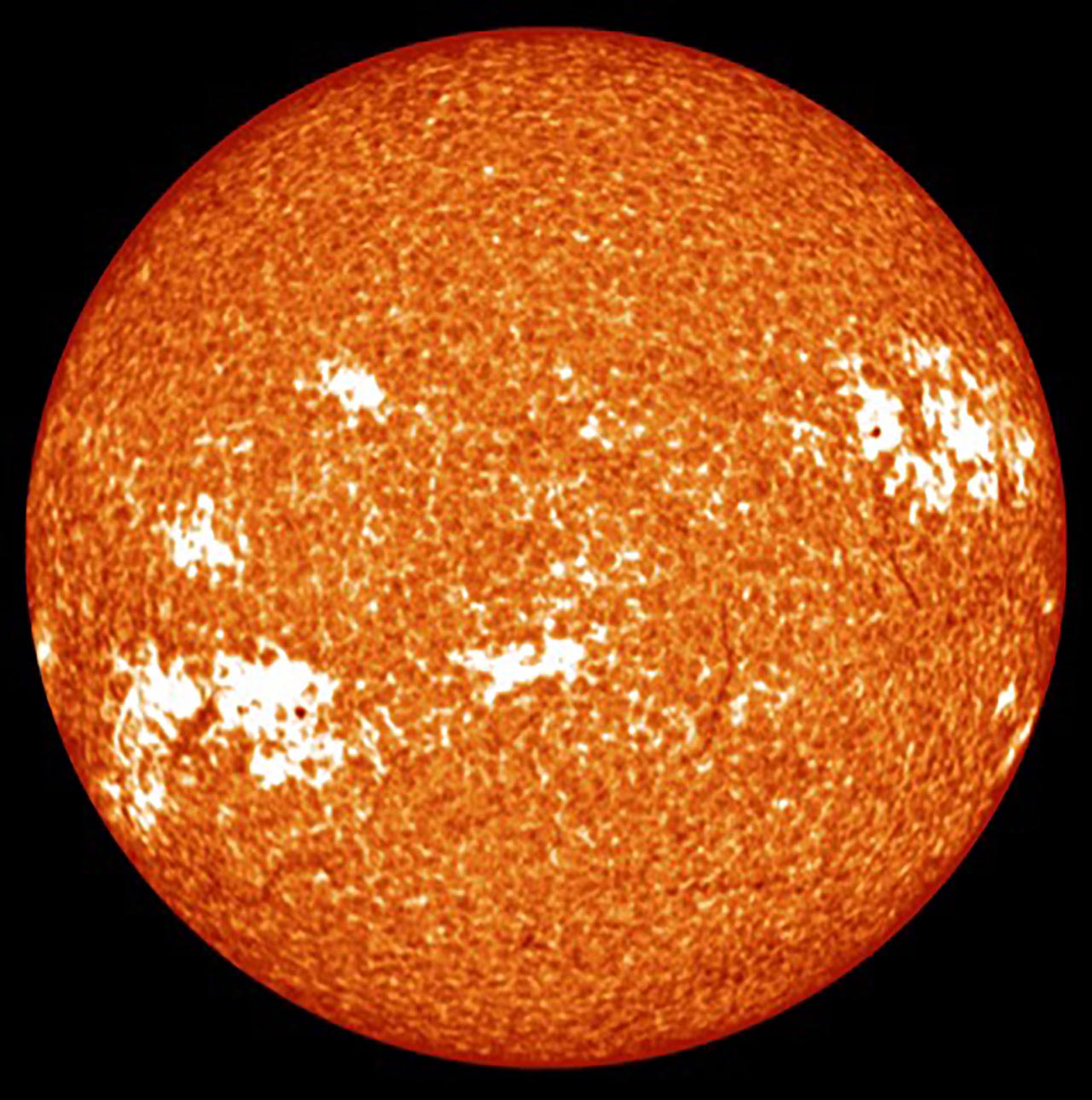NSO: Scientists Developed New Model to Predict Sunspot and Plage Coverage for Solar Cycle 25

Sunspot and plage area used as a better proxy to predict magnetic phenomena and other indicators important for space weather
Since Samuel Heinrich Schwabe discovered the cyclical nature of sunspots in 1843, astronomers have studied changes in the Sun’s magnetic activity throughout solar cycles. In 2021, scientists from NSF’s National Solar Observatory (NSO) and University of Rome Tor Vergata developed a new model that predicts the solar cycle’s sunspot and connections to bright, distributed regions of the sun known as plage (French word for beach). This is a significant improvement in respect to previous models, allowing scientists to better predict the strength of our recently started solar cycle 25.
Variations of the Sun’s magnetic properties affect the near-Earth space environment, heliosphere, and interplanetary medium. This variability is characterized by phenomena that act over a wide range of temporal scales from minutes to centuries. Solar flares and coronal mass ejections (CMEs) are eruptive events that impact satellites, communication networks, electric power grids, and technological infrastructures. In comparison, solar activity over longer timescales modifies the “space climate” that influences the conditions of Earth’s atmosphere and climate.
Solar cycles are typically 11-year periods where the Sun’s activity oscillates between peaks of solar maximum and solar minimum. The number of sunspots and associated solar storms increase as the Sun moves toward solar maximum and decrease to zero during solar minimum.
Space weather events like solar flares, CMEs, and geomagnetic storms also approximately follow the solar cycle. These events can be detrimental to our advanced technologies, critical infrastructures, and human activities on Earth and in space. The capability of predicting a cycle’s solar activity and intensity has become of paramount relevance.
Prediction models traditionally focus on the number of sunspots to determine a solar cycle’s strength, but results have been inconsistent. The new model proposed by the team of scientists from the NSO and University of Rome TorVergata, led by Dr. Valentina Penza, focuses on the correlation between area coverage of sunspots and area of plages as a better proxy to predict magnetic phenomena and other indicators important for space weather.
NSO is managed by AURA under a cooperative agreement with the National Science Foundation (NSF).
